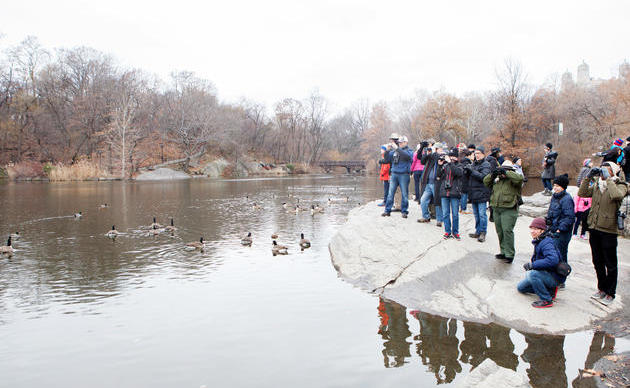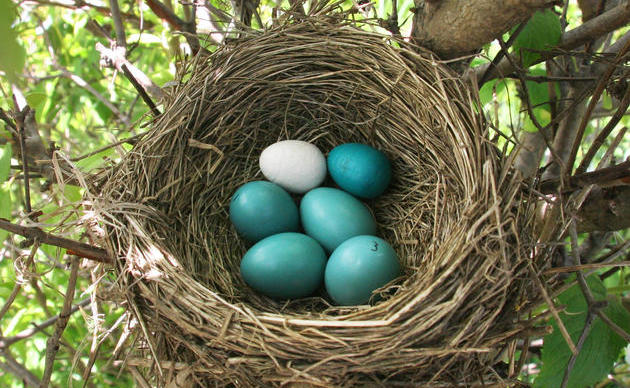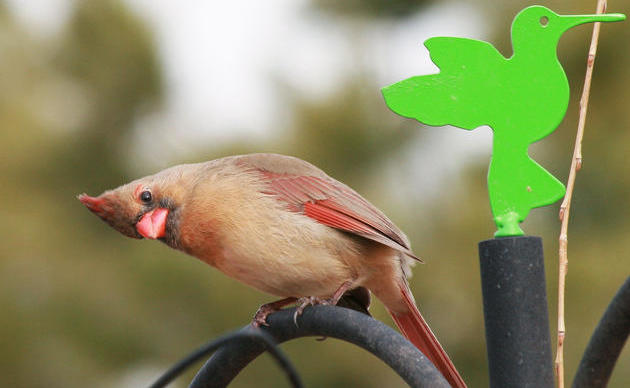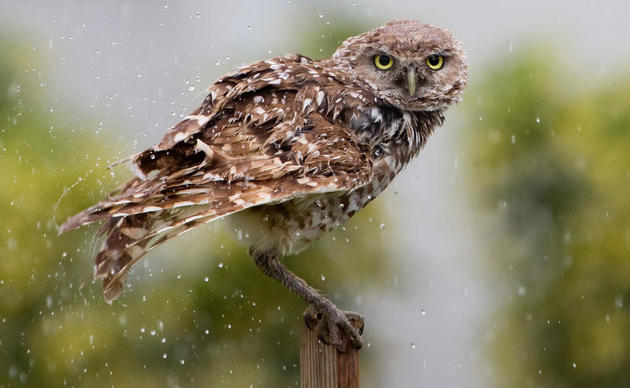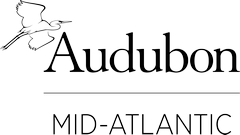Frequently Asked Questions
How do I register my property?
It’s easy. Take National Audubon’s Healthy Yard Pledge. Then, complete the online application (or print and mail in). Once the application is received and processed, you will receive a yard sign, property score, and password for the Audubon At Home forum where you can post your ideas, questions, and sightings.
Why register my property?
By doing so, you join a community of like-minded people in an effort to improve the quality of natural systems and the quality of life. You also stand to reduce the costs and time required to maintain a “standard” landscaped property. With the property sign, you’ll be able to raise awareness. As part of the Audubon network, you will be joining a worldwide leader of conservation that has been hard at work for more than 100 years.
Do I have to be an Audubon member to register?
No, but we’d love to have you! Audubon At Home is welcoming a new audience to Audubon as we recognize that the home (school, work, etc.) landscape can be the foundation for nature exploration, a healthier environment, and bird conservation.
What type of properties can register?
Residential properties of any size
Corporate land or business campuses
Schools including colleges and universities
Public land and parks
What do I get after registering?
- An attractive 10”x14” inch metal sign that can be proudly displayed in your yard, schoolyard, workplace or park.
- A property score and rating based on available resources to birds.
- A password that will allow you to access the Audubon At Home Forum. There, you can ask questions about birds, plants and healthy yard issues, meet people, learn about local happenings, or simply read the latest posts.
- Updates on Audubon At Home events and chapter information through quarterly eNewsletters.
- Tools to track and record the changes in your yard and guided plans to improve it each year.
When I register, is my property an official sanctuary?
No, there is no official Audubon sanctuary status, certification, or designation; nor will your property be officially affiliated with any sanctuary administered by any government entity. This is strictly a recognition/registration program.
I haven’t started yet. What do I need to do?
Select an area of your property where you can plant some native plants that will provide cover, food, and possible nesting sites for birds. Provide water. Stop using pesticides. Consider birdfeeders and nestboxes. Replace exotic ornamental plants with native ones. Avoid and control invasive plants. Make sure that at least 10% of trees and shrubs on the property are native (1 in 10).
Do I need to convert my entire outdoor space to bird habitat?
No…in fact, we encourage you to retain as much “people space” as needed. The idea is not to create inaccessible spaces, rather interesting places that are alive and vibrant and most of all, inviting to wildlife and people. When you’ve implemented food, shelter, water, and cover sources for birds, we hope you’ll register. Meanwhile, check out the many helpful books in our Good Books! section.
I’m not really into birds. Should I still register?
By providing habitat you’re improving your “ecological footprint” and establishing resources that help a variety of organisms including pollinators and more inconspicuous (but no less important) components of the plant and animal kingdoms.
What makes Bird Habitat different from other backyard programs?
It’s about birds! This program uses birds as indicators of positive and negative change within the boundaries of a property, encouraging a level of monitoring and reporting that does not exist in other programs. Participants will be invited to stay involved throughout the year and report progress as it happens.
It’s homegrown. We’re all about Pennsylvania and the amazing potential of personal spaces within it. As a regional program, more focus can be given to specific recommendations.
It’s multi-faceted. Audubon At Home encompasses broad Healthy Yard topics including water conservation, pesticide use, and energy output.
Survey says…! We hope participants will take note of the birds in their yard and the changes they see. This information will prove to be a powerful endorsement of habitat gardening in years to come.
It’s social! You can talk and interact with others 24 hours a day on the Audubon At Home Forum, an online community.
How much does it cost?
There is no cost to register your property, however tax-deductible contributions are welcome. The Bird Habitat yard sign is offered as a premium for contributions of $25 or more, or can be purchased for $15.00.
What is a Native Plant and why are they important?
A native plant is defined as one which was present in a defined area (site, state, region, province, ecological classification subsection) prior to European settlement and grows naturally in an area without direct or indirect human intervention. Native plants are adapted to the particular conditions of a region and have co-evolved within plant communities and with birds, insects, and other wildlife. There are over 3,000 plants native to Pennsylvania.
Is my tree (shrub, plant, etc) native?
You may ask this question on Forum or contact a local native plant nursery or nature center. Some online plant lists include:
The Pennsylvania Flora Project, Morris Arboretum: www.paflora.org
Lower Makefield List (pdf – use the search function in Acrobat [binoculars] to find a particular plant)
Learn about your physiographic region (Piedmont, Ridge and Valley, Pittsburgh Plateau, etc.) to find out which plants are native to your region. Many are found throughout the state, others grow best in the region in which they are found naturally.
Where can I purchase native plants?
It’s getting easier each year! Many non-profit organizations (such as nature centers) sell native plants. See our link to native plant sales in Spring and Fall. You can also find a list of nurseries hereand here. Remember, never take native plants out of the wild.
Can someone help me identify things on my property?
We’re working on training folks who will be able to visit your property and evaluate its potential ecological value based on current conditions. At the moment however, we invite you to register and pose any questions you might have on the Forum.
I really want to support a specific kind of bird. How can I learn what it needs?
That’s great… The more specific the conservation plan you have for the property, the better odds you have at helping particular species. Some “recipes” are available here with more coming soon.
Do I have to be a Pennsylvania resident to register?
No, New Jersey, Delaware, and West Virginia applications also accepted. Other bordering states have Audubon state offices that may adopt similar programs in the future.
How you can help, right now
Donate to Audubon
Help secure the future for birds at risk from climate change, habitat loss and other threats. Your support will power our science, education, advocacy and on-the-ground conservation efforts.
Become a Monthly Donor
Donating monthly is flexible, easy and convenient and makes you a champion birds can count on, no matter the season.

